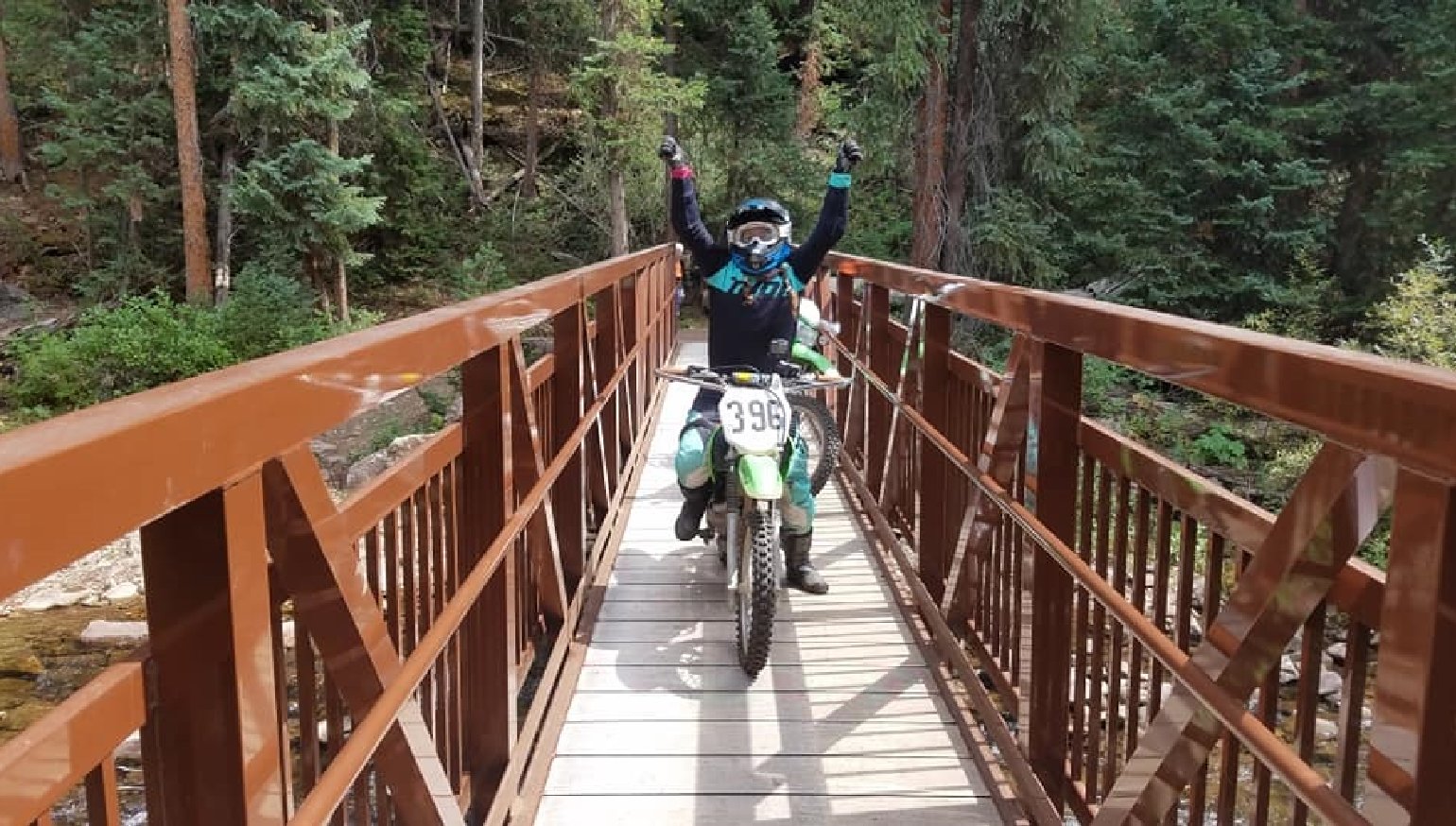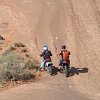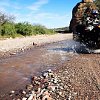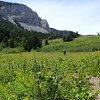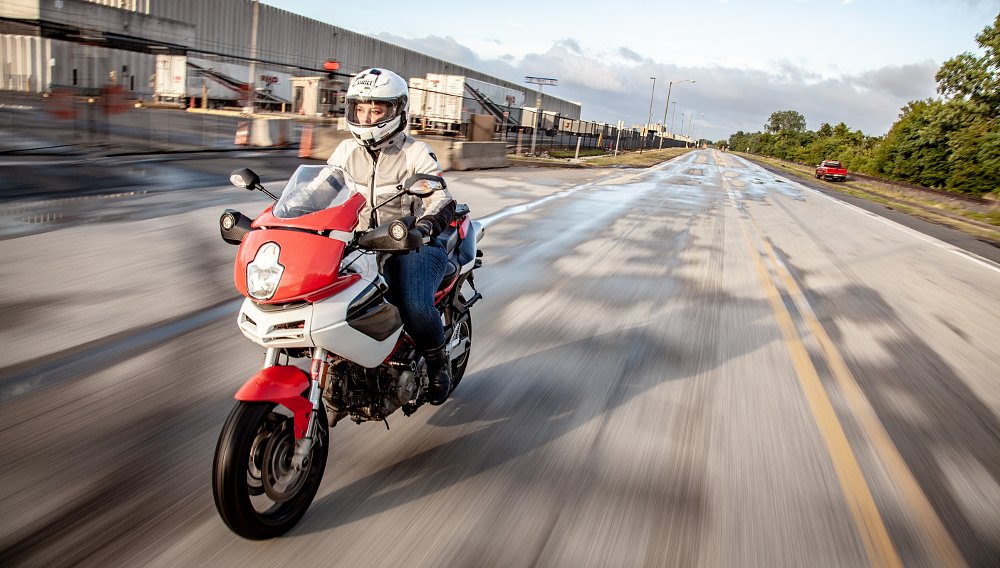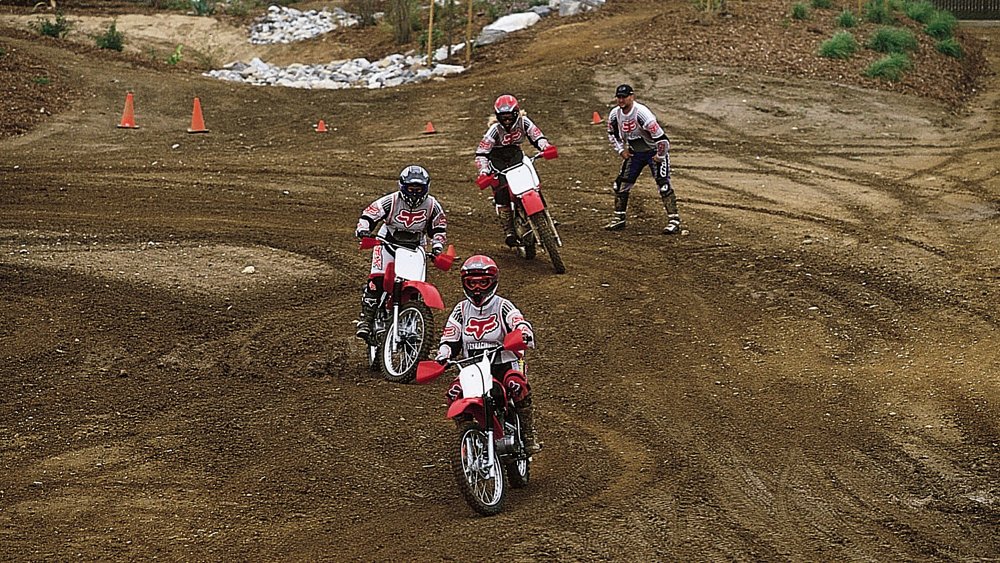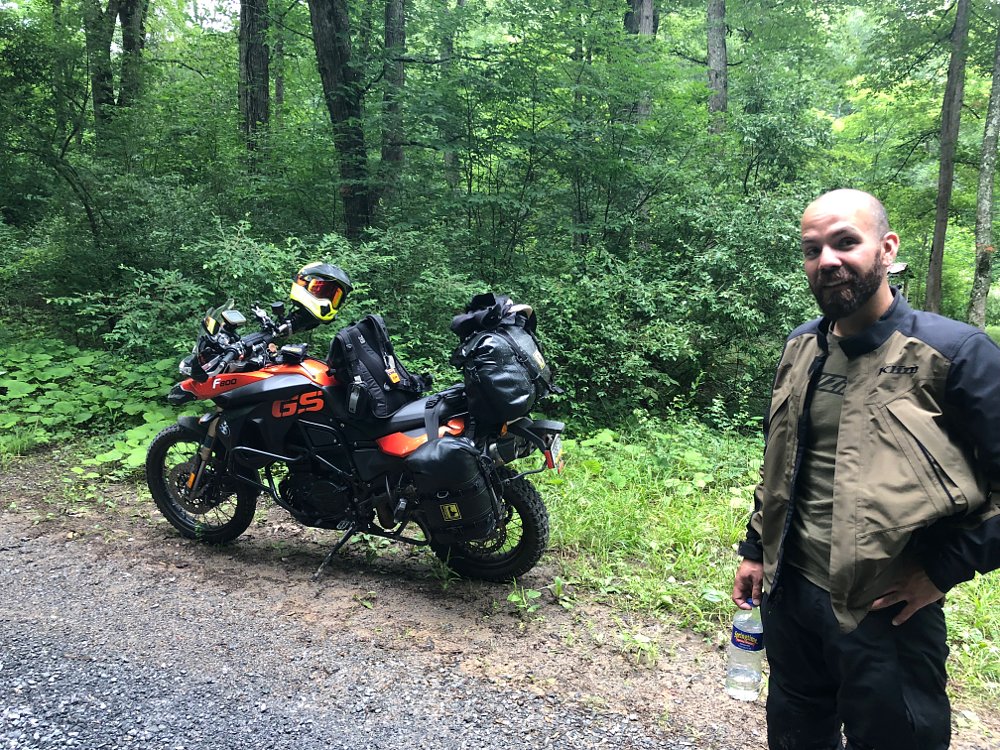"Hold my beer and watch this." The battle cry of bros everywhere.
Ridiculous as it sounds, I’ve always been a little jealous of people who have that kind of easy (over)confidence. The ability to just look at any obstacle, no matter how big, fast, or death-defying, and have the unflinching belief that they’ll be OK.
Now, it might be surprising to hear this from someone who both races and has traveled extensively on a bike, but I’m very much an over-thinker, I have anxiety, and it always seems to take me twice as long to get comfortable doing things the rest of the world can figure out in minutes. I’m an intellectual, not an athlete. I’m sure there’s a whole lifetime of trust issues and psychology I could unpack here to explain this, but instead, let’s talk about how this applies to motorcycle riding.

Imagine, if you will, sitting atop a dirt bike in the back country. You’re a newer rider. You don’t really know what you’re doing, and your mind has made sure you’re constantly aware of that fact. You see a bunch of rocks in the road, sitting on the other end of a deceptively steep incline. In a split second, you’ve conjured up every possible thing that can go wrong. You've imagined all the ways you might get hurt, all the mistakes your inexperience is bound to cause. You haven’t even attempted the obstacle yet, but you’ve already decided it’s too much.
You hit the brakes. You stare at the rocks. And now the fear is even worse. Like a self-fulfilling prophecy, your worrying makes you even more likely to make a mistake.
Your buddies might poke you to stop being a wimp, and you want to stop being a wimp, too. But that doesn’t change the fact that your body is paralyzed with fear. This is the simplest way I can think to explain what it’s like to try to learn to ride when you’re an anxious person with an overactive imagination. But fortunately, there are a few ways to get past an excess of self-preservation that aren’t as barbaric as yelling “Send it!”

Education
It’s easy to just say “seat time,” but it’s more complicated than that. Even if you’ve been riding for a little while, your brain might still be taunting you because you know you don’t actually know what you’re doing. Maybe you’ve crashed a few times, you’ve hurt yourself, or you’re just humble enough to know the limits of your knowledge. Seat time is hugely important, but quality seat time requires understanding the fundamentals.
One of the easiest ways to do that is to seek out professional instruction. I’ve taken a lot of schools in my 12 years of riding. I started out with the MSF course, and I took the drills they suggested to a parking lot until I was confident enough to start commuting. After six months of canyons and freeways, I started to think I was a good rider… up until I nearly threw my bike over the edge of Glendora Mountain Road in Southern California.
The next time I got on a bike, I was shaking every time I saw a corner. I had no idea what I did wrong, but I knew I didn’t want it to happen again. So I bought a bunch of riding books to try to pull apart my mistakes, from "Twist of the Wrist" to "Proficient Motorcycling," and I decided it was time to go to a racetrack and learn how to corner properly. I signed up for an introductory class (most track day organizations have control riders on staff who provide extra help and instruction to new riders), and I got myself to Streets of Willow. I was probably one of the slowest riders to ever grace the back straight, but the more laps I did, the easier I was able to practice the techniques I’d read about.
Once I started racing, where progress is clearly quantifiable, it became more obvious that I had hit a plateau between my speed and my fear threshold. What you think you’re doing and what you’re actually doing doesn’t always mesh, so taking classes with Ken Hill and Jason Pridmore, where they analyzed my riding and showed me ways to remain in control even as my speed increased, was everything I needed to keep improving.

But schools can be expensive, and not all of us have the time or money to have a professional critique us, especially in the early days of riding. While I can make the argument that you should be investing in training before you invest in a new exhaust, that kind of will power isn’t always realistic.
Fortunately, you can have your exhaust and enjoy the resources available on the internet for free. When I decided to learn to ride a dirt bike in COVID times, when everything was shut down, I watched some YouTube videos by skilled professional riders in which they explained techniques in detail. With the seeds of knowledge planted, I found that instead of staring at a drop off and worrying about what would happen if I lost control and went too fast, I focused on modulating the clutch in conjunction with the front and rear brakes, forcing my mind to stay in the present. Previously terrifying obstacles began to feel more like solving a puzzle than defying death, and I love puzzles!

Know thine enemy
On that last point, so much of anxiety is about thinking too far ahead, fearing a future that likely won’t ever come. It’s a combination of uncertainty and a lack of trust. Whether your bike is going to make it through the creek or you get washed away feel like equal possibilities.
If uncertainty is your enemy, then perhaps you just need to, well, reduce it. If your buddy suggested a trail or a road you’ve never been on, watch some videos of others who have been there. If there are no videos, study a map (topo maps can be especially helpful for dirt) or ask someone. Regional public forums or forest service rangers are tremendous resources. Make sure you know where you’re going and how to get yourself back on your own, in case something were to happen.
When you’re winging it and you don’t have time to pre-game — maybe you stumbled upon a dark creek that’s higher than it used to be or a loose hill with uncertain traction — walking the obstacle first can give you time to analyze the best route through it, understand how scary it really is (or isn’t), and pull it apart with logic instead of using blind trust.

Motivation
When I decided last year that I wanted to learn to ride dirt after years of tarmac, I suddenly felt like I was back to square one, even though I’ve been riding for more than a decade. The feeling of having my tires slide around terrified me, rocks and hills and sand triggered the ugliest fear I’ve ever swallowed. At one point, I literally cried when I was staring down a steep hill that I had no choice but to pass if I wanted to get back to the truck.
It’s easy to just say, “Well, if it’s that scary, then maybe it’s not for you.” But I wanted it to be for me, and I knew if I could get past the growing pains, the reward would be worth the struggle. While telling myself “You can do it!” didn’t silence my inner demons, telling myself “If you do this, you can get some of that fancy hand-churned ice cream with the peanut butter cups” did.
Treat yourself. That hill you conquered or that rock you surmounted might not seem like a big deal to anyone else, but don’t downplay how big a deal it was to you. Conquering your fear deserves a reward, and having something positive to associate with rough times is a surprisingly helpful mental exercise. You’d be surprised what you can accomplish if you can make yourself smile in the moment instead of frown.
At the end of the day, it’s OK to be scared, especially when you’re learning. That initial fear doesn’t mean you don’t belong on a motorcycle, and no matter how easy all your friends make it look, you’re not the only one who feels that way. Be patient with yourself. And when you get over those humps, the thrill of the wind in your hair will be that much more satisfying.




